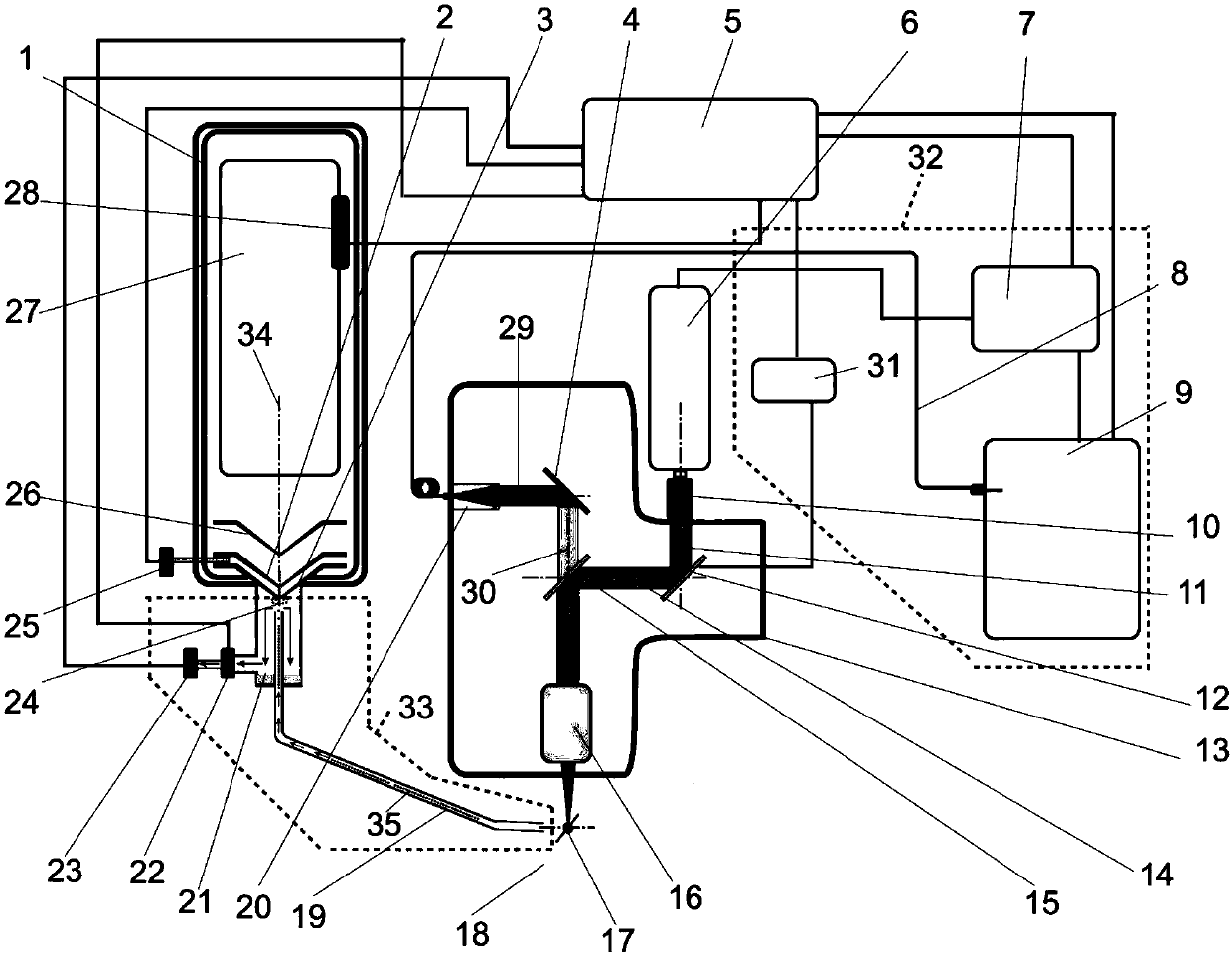Substance detection method through optical spectrometry-mass spectrometry combination under planet open environment
A detection method and combined technology, which are used in measurement devices, material analysis by electromagnetic means, instruments, etc., can solve the problems that mass spectrometry analysis is not suitable for use, difficult to adapt to deep space planetary detection, etc., and meet the requirements of optical mass spectrometry multiplexing. Effect
- Summary
- Abstract
- Description
- Claims
- Application Information
AI Technical Summary
Problems solved by technology
Method used
Image
Examples
Embodiment Construction
[0029] The specific embodiment of the present invention is as figure 1 shown.
[0030] The combined material detection method of LIBS and MS in the open environment of the planet proposed by the present invention can be used to detect the material composition of the rocks, clays and other detection objects in the detection area 18 in the open environment of the planet. It is implemented on a substance detection system, and the combined substance detection system is composed of a main controller 5, an MS module 1, a LIBS module 13, an optical mass spectrometry coupling module 33 and an auxiliary module 32;
[0031] The LIBS module 13 is composed of a LIBS laser 6, a beam expander 10, a two-dimensional scanning galvanometer 12, a dichroic mirror 15, a total reflection mirror 4, and a fiber coupling mirror 20; the LIBS laser 6 adopts an adjustable repetition frequency deep ultraviolet femtosecond laser , the selection of deep ultraviolet wavelength can effectively reduce the fra...
PUM
 Login to View More
Login to View More Abstract
Description
Claims
Application Information
 Login to View More
Login to View More - R&D
- Intellectual Property
- Life Sciences
- Materials
- Tech Scout
- Unparalleled Data Quality
- Higher Quality Content
- 60% Fewer Hallucinations
Browse by: Latest US Patents, China's latest patents, Technical Efficacy Thesaurus, Application Domain, Technology Topic, Popular Technical Reports.
© 2025 PatSnap. All rights reserved.Legal|Privacy policy|Modern Slavery Act Transparency Statement|Sitemap|About US| Contact US: help@patsnap.com

